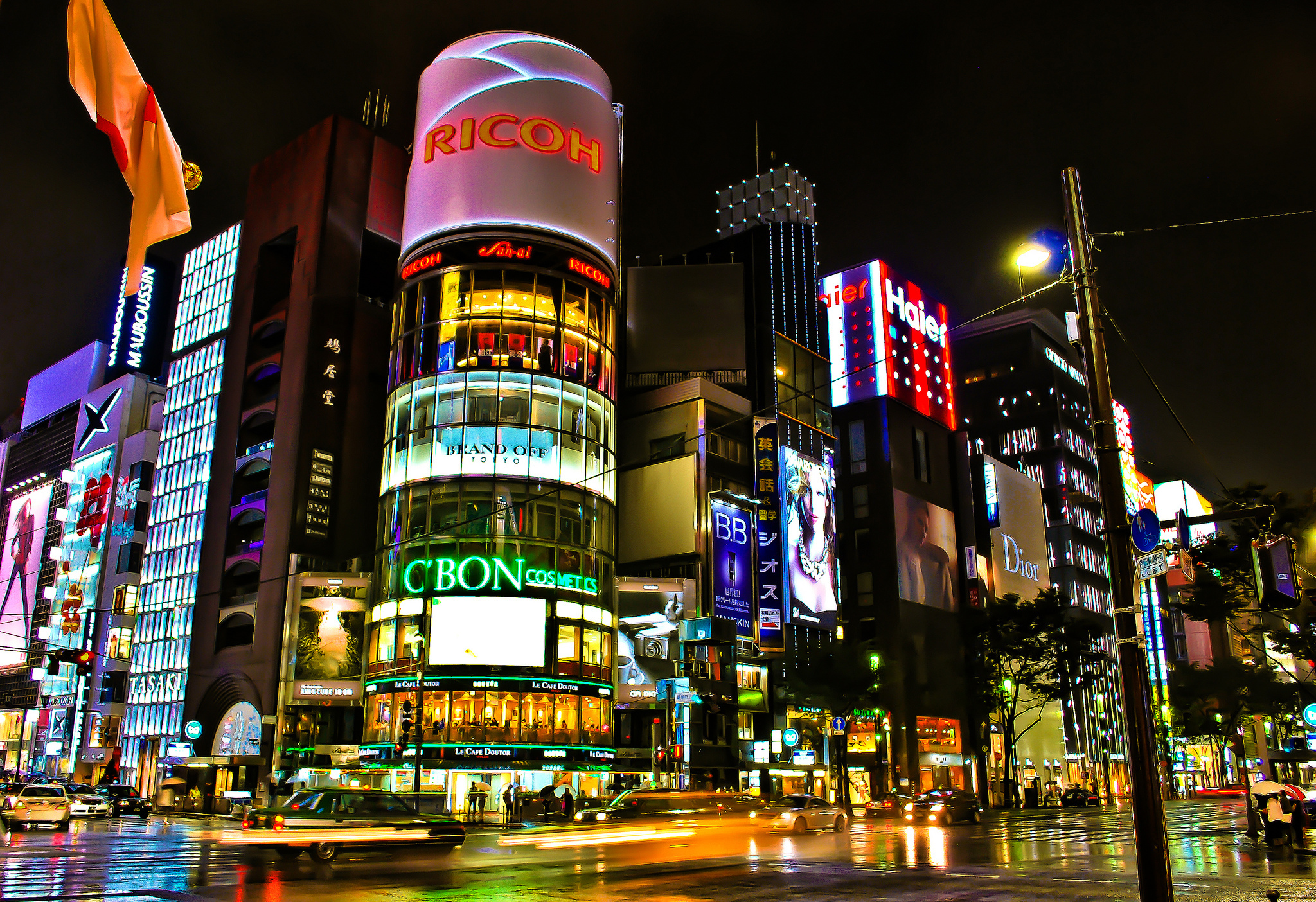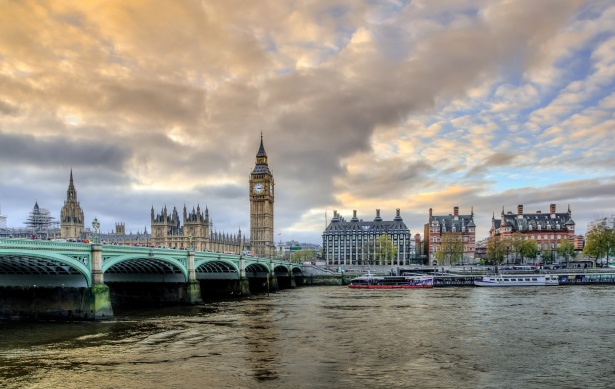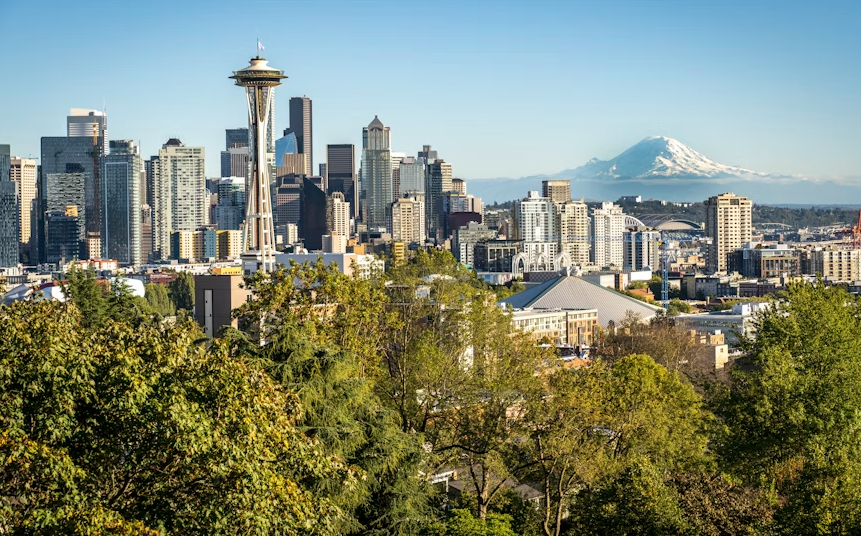Do you know how big the difference of the cost of living in London vs NYC (New York City) is? London and NYC are both world-class cities which provide high-quality education and various career opportunities. According to the 2022 Economist Intelligence Unit’s Worldwide Cost of Living Index, London ranks 28th in the world’s most expensive cities, while New York is ranked as the one of the most expensive cities. So who is the winner in the NYC vs London cost of living? This guide will show in detail the expenditure on all aspects of life in London and NYC, hoping to help you gain an in-depth understanding of these two popular cities!
Cost of Living in London vs NYC: An Overview
The cost of living in New York is higher than London. It would cost approximately £7,600 to maintain the same lifestyle as about £5,760 would get you in London, according to data collection project Numbeo. This table will show the comparison and average amount of major cost of living in New York vs London.
| Total Cost of Living Comparison | ||
|---|---|---|
| Expense Category | London(Average Per Month) | NYC(Average Per Month) |
| Food and Dining | £560–£750 | £600–£840 |
| Student Accommodation (Shared) | £900–£1,700 | £1,080–£2,960 |
| Transportation | £160 | £102 |
| Health Care | NHS, mostly free | £160–£400 |
| Total Cost | £1,620–£2,610 | £1,942–£4,302 |
Cost of Living in London vs NYC: Food and Dining
A large cost of living NYC vs London is eating. Three meals a day, whether you choose to cook by yourself or eat out, it will cost a lot of money. After all, the price is very high. Therefore, the cost of meals in London and New York can be roughly divided into two parts: the cost of dining out and the cost of grocery for cooking at home.
Expense of Eating Out
| Cost of Dining Out | ||
|---|---|---|
| Category | London | NYC |
| Meal (inexpensive Restaurant) | £18.83 | £21.86 |
| Meal (Mid-range Restaurant) | £80.00 | £102.39 |
| McDonalds | £8.00 | £8.78 |
| Beer(Domestic) | £6.48 | £5.85 |
| Cappuccino | £3.83 | £4.28 |
| Coke/Pepsi | £2.10 | £2.42 |
| Water | £1.32 | £1.86 |
In London, generally speaking, if you eat in a medium-priced restaurant, you would pay about £15 to £30. And if you want to eat in a better restaurant, this meal may cost £40 to £80. Of course, the street snacks and fast food are much cheaper and affordable. For example, a portion of fish and chips or a hamburger only cost about £5 to £10.
In New York, most restaurants are more expensive than in London, regardless of whether it is a budget-friendly or upscale restaurant. Even the drinks is the same. The price of a meal in a regular restaurant is usually $20 to $40 (£16-£32). Then the price of the corresponding high-end restaurant will be more expensive, which may reach $50 to $100 (£40-£80). by the way, you can also choose snacks such as pizza and hot dogs which only cost about $2 to $5 (£1.6-£4).
Expense of Purchasing Groceries
The cost of eating out is not a small amount especially for students in London or New York. Therefore, some of them will choose a more affordable way to cook at home, then the supermarket or grocery store become the frequent places to go.
In terms of eating out, London is cheaper than New York. And the prices of most food or various miscellaneous goods also show this trend.The following is a comparison of the prices of some common foods in London and New York. In a word, London is a more affordable city, compared with the cost of living in New York.
| Cost of Grocery | ||
|---|---|---|
| Category | London | NYC |
| Milk(1 liter) | £1.30 | £1.16 |
| Loaf of Fresh White Bread (500g) | £1.64 | £3.67 |
| Rice (1kg) | £1.86 | £6.05 |
| Eggs (12) | £3.64 | £5.26 |
| Local Cheese (1kg) | £7.96 | £12.55 |
| Chicken Fillets (1kg) | £6.4 | £11.76 |
| Beef Round (1kg) | £10.37 | £14.58 |
| Apples(1kg) | £2.49 | £5.42 |
| Banana(1kg) | £1.44 | £1.84 |
| Tomato(1kg) | £2.69 | £4.66 |
| Potato(1kg) | £1.20 | £2.74 |
Cost of Living in London vs NYC: Student Accommodation
In the comparison of the cost of living New York vs London, a large part focuses on rent. For people who attend university in these two cities, it is also extremely important to choose a suitable student apartment. The following is a comparison of housing spending in London and New York.
| Cost of Accommodation | ||
|---|---|---|
| Category | London(Average Per Month) | NYC(Average Per Month) |
| Apartment (1B) in City Centre | £2208.07 | £2,967.47 |
| Apartment (1B) Outside of Centre | £1,654.81 | £1,853.33 |
| Apartment (3B) in City Centre | £4,120.97 | £6,012.52 |
| Apartment (3B) Outside of Centre | £2,750.79 | £3,822.38 |
| Student Apartment | £800–£1,500 | £960–£2,800 |
| Basic Utilities(Electricity, Heating, Water, Garbage) | £239.09 | £134.00 |
| Internet(60 Mbps or More, Unlimited Data, Cable/ADSL) | £31.93 | £46.33 |
Student Accommodation in London
As an international metropolis, the price of student apartments in London is mostly related to the location of residence. Generally, the city center costs most expensive in the rent. An apartment in Zone 1 costs £700 to £1,200 per month. But the rent is about £500 to £800 per month in Zone 2 or Zone 3. For students with limited budgets, they prefer apartments there. In a suburb such as in the East or South London, you only need to pay £400 to £600 a month for rent.
It should be noted that housing expenditure not only includes the rent, but also the cost of the water and electricity grid, which is usually not included in the rent and requires an additional payment, about £80 to £150 per month, depending on the size of the room and the usage of the tenant. Then choosing a student accommodation in London with a rent including water and electricity grid fees will not only save trouble but also be more cost-effective.
Student Accommodation in New York City
The price of student housing in New York is generally higher. The monthly rent for student apartments in Manhattan is usually between $1,500 and $3,000 (£1,200-£2,400), while the rent in Brooklyn and Queens in the outer city is slightly cheaper, at about $900 to $2,000 (£720-£1,600) per month. Under the influence of high rents, more students will choose to share a house. Apartments in New York usually do not include water grid fees, which requires an additional monthly cost of about $100 to $200 (£80-£160) for water and electricity and $40-70 (£32-£56) for internet.
Cost of Living in London vs NYC: Transportation
So how about the comparison of transportation expenses in London vs NY? Living in these two internationalised metropolises, whether you attend university, go to work or travel on a daily basis, you need to choose transportation. The following is a comparison of transportation in living expenses in London and New York.
| Cost of Transportation | ||
|---|---|---|
| Category | London | NYC |
| One-way Ticket (Local Transport) | £ 3.00 | £ 2.12 |
| Monthly Pass (Regular Price) | £ 186.09 | £ 96.53 |
| Taxi Start (Normal Tariff) | £ 4.40 | £ 3.65 |
| Taxi 1km (Normal Tariff) | £ 2.50 | £ 1.59 |
| Gasoline (1 liter) | £ 1.43 | £ 0.68 |
London's Public Transportation
London’s public transportation is very developed and is known as one of the most complete public transportation in the world. Whether it is the underground (tube), bus or bicycle rental system, it is widely popular.
- Underground(Subway)
The London Underground is especially popular in the city centre. The one-way ticket price for adults is about £3, while students can use the “Student Oyster Card” and other discounts, or use Contactless to pay for greater discounts. The price of a monthly ticket and a 7-day pass is usually between £100 and £160, depending on your region. - Bus
London’s bus routes are also widely covered, and the ticket price is cheaper than that of the subway. The adult ticket price is about £1.65, and the “daily cap price” system is adopted, that is, you only need to pay up to £4.95 to ride unlimited times a day. For students, if they choose the right transportation card, it will be cheaper to travel by bus. - Bicycle
The Santander bicycle rental system is also very convenient and affordable to use. You only need to pay £2 for the first 30 minutes, and after more than 30 minutes, you need to pay an additional fee for every half hour.
- Underground(Subway)
New York's Public Transportation
In New York, the transportation system is as complex and diverse as London. Except for the subway, actually the taxi, bus and shared bicycle are also common travel options. The cost of transportation in New York is generally high.
- Underground(Subway)
The subway lines covers major areasin New York City, mostlyin and around Manhattan. Buying a one-way ticket costs $2.65 (£2.12). if you are frequent travelers, the monthly ticket about $127 (£101.60) is suitable for you. However, there are some old lines not well maintained, so delays may occur sometimes. - Bus
The expense of bus in New York is the same as that of subway. It is more suitable for short-distance passengers, which is often used for connecting to subway stations. You have to attention that it often faces traffic jams. - Taxi
Taxis in New York are higher, starting at $2.50 (£2). The charge is about $0.5 (£0.4) for each additional 0.2 miles. There will be an additional charge during the peak hours. If you choose taxi-ailing software such as Uber or Lyft, it will be slightly cheaper. - Bicycle
New York’s bicycle-sharing system is similar to that of London, and the cost of renting a bicycle is $12 (£9.6) per day. Or 4 dollars (£3.2) per hour.
- Underground(Subway)
Cost of Living in London vs NYC: Health Care
Medical insurance is a topic of concern to every resident. The medical services in London and New York are relatively developed, but the systems are different, and the medical costs are also different.
London's Medical System: NHS-oriented
London’s medical system mainly relies on the British National Health Service System (NHS), which is one of the largest public health care systems in the world.
- The NHS provides almost free medical care to all people who live legally in the UK. International students with valid visas need to pay an immigrant health surcharge (IHS) of about £470 per year when applying for a visa, and can enjoy comprehensive NHS medical services, including hospital treatment, medical consultation, emergency and mental health services.
- The NHS will provide free family doctor (GP) services, and routine check-ups and health consultations can be provided by registering a local GP. International students only need to pay £9.35 a year for medicine.
- The emergency service is free of charge. It should be noted that dental treatment and ophthalmic services are not entirely included in the NHS. The cost of dental services in the NHS is relatively high, ranging from £20 to £200, depending on the type of treatment. In addition, the cost of glasses or contact lenses is also at your own expense.
New York's Medical System: Private Medical Care
New York’s medical system is quite different from London’s. The U.S. medical system mainly relies on private insurance and hospitals.
- Although some public medical services are also provided, overall, the cost of medical care in New York is relatively high. Most international students need to purchase medical insurance. If they purchase medical insurance through a school, they usually need to pay $1,500 to $3,000 (£1,200-£2,400), depending on the university and the type of insurance plan chosen.
- These insurances usually cover basic hospital treatment, outpatient treatment and emergency services. It should be noted that the coverage of different insurance plans is different, and you need to understand clearly before purchasing.
Emergency services in the US are not cheap. Even with insurance, you need to pay $500 to $2,000 (£400–£600). The average charge of a regular doctor’s appointment without insurance is $100 to $300 (£80-£240). Without insurance, the price of drugs is often very high. Even with insurance, students need to pay $10 to $50 (£8-£40) for out-of-paid drugs.
Dental and ophthalmology services in New York are usually included in the standard medical insurance, requiring additional insurance or out-of-charge. The charge of a dental treatment ranges from $100 to $500 (£80-£400), and you have to pay 80-£$100 and $300 (£240) for an eye examination and the glasses.
Quality of Life: London vs NYC—Which is Better for Students
1.Safety
In recent years, you have to pay attention to the youth gang violence in downtown London which is a serious issue. Through avoiding walking alone or going to the strange neighbourhood at night, you can reduce the risk of danger. The public security management in London is generally well done.
In New York, the public security condition has changed and improved a lot in recent decades. The police in New York can make quick response and conduct measures rapidly, which improved the security.
2. Weather
- London is oceanic climate with mild changes in the four seasons; the temperature in summer is 15-25 degrees Celsius, and the temperature in winter is 2-8 degrees Celsius; precipitation is evenly distributed throughout the year, and drizzle and cloudy days are relatively common, adding a wet and cold atmosphere to the city.
- The four seasons in New York are distinct, and the extreme seasonal changes are more obvious; the temperature in summer is 30-35 degrees Celsius, and the temperature in winter is -5 degrees Celsius to 5 degrees Celsius; the climate is pleasant in spring and autumn.
3. Air Quality
With the help of a series of environmental protection policies and traffic control measures, London owns an improved air quality.
In New York, the air condition is more complicated. In general, the air pollution in New York City is at the lower-middle level in the whole US.
4. Public Facilities
London’s public facilities focus on green and service quality.
- Educational facilities:
London has rich education resources and common public libraries. There are also regular cultural activities such as lectures.
- Leisure facilities:
In downtown London, parks and green spaces are abundant. Various sports fields swimming pools, and basketball courts are opened to citizens.
- Educational facilities:
- New York’s public facilities pay attention to the coexistence of modernisation and diversification.
- Educational facilities:
Many well-known universities are located in New York. The public school system also covers the majority of the city residents. There are many libraries and community facilities for education.
- Leisure facilities:
Parks like Central Park offer huge green area for this city. In addition, New York has completely set the public facilities for exercise and relax.
- Educational facilities:
5. Cultural Life
London:the Fusion of History and Modernity
- Museums and art galleries:
Museums and galleries in London like the British Museum, the Tate Modern Art Gallery, the National Gallery are world famous. People are given the chance to appreciate the charm of art and ancient civilizations there.
- Theatre and music performances:
With the existence of the theaters and musical centers in the west end of London, needs of different audiences are met successfully.
- Nightlife and bar culture:
It is an unique underground music culture that boasts London’ rich entertainment options. Jazz bars, electronic music clubs are popular destinations.
- Museums and art galleries:
New York: Vitality and Diversity
- Broadway and musicals:
The classic show such as Hamilton and The Phantom of the Opera attracts thousands of audiences to New York. The theater performances in New York focus on innovation and modernization .
- Museum and art exhibition: New York’s museums also keep pace with the times, regularly holding some cross-border art exhibitions or popular culture exhibitions, making the perfect combination of art and popular culture.
- Nightlife and street culture: New York’s nightlife is uniquely vibrant around the world. From Manhattan to Brooklyn, there are bars, restaurants, nightclubs and Latin dance venues.
- Broadway and musicals:
Conclusion
In the comparison in the cost of living in NYC vs London, it is clear that both cities show their advantages and challenges. London is relatively more affordable in the aspects of rent, public transportation and health care. Through the NHS, international students can get free medical care. New York offers more options in terms of entertainment, shopping and career opportunities, but high rents. Although New York’s public transportation system is very convenient, medical costs are high and additional budgets are required to purchase insurance.
FAQ
How much is the London cost of living vs New York?
The cost of living in London is about £1,620–£2,610, and that of NYC is about £1,942–£4,302. The cost of living in London vs nyc(New York City) vary because of several factors. For example, the accommodation, transportation, lifestyle, and personal spending habits would influence the amount. For students, London might be a better option especially when you consider the health care and public transportation.
Is London more expensive than New York?
No, it is more expensive to live in NYC than in London for international students. International students in London can benefit from the cheap healthcare provided by the NHS. Besides, lower living costs in certain areas in London can cut your budget.If you care the affordability most, London may be the better choice.
Is rent more expensive in NYC or London?
The rent is more expensive in NYC than that in London. The rent tends to charge more in areas like Manhattan and some parts of Brooklyn. London’s rent in shared accommodations can be cheaper than NYC’s. It is a more cost-effective option for students or individuals looking to share apartments.
Which city is richer: NYC or London?
NYC is richer than London. Its financial market plays a more prominent role in the global economy. A higher income in average in New York attracts more international investment in the fields like finance, real estate, and technology. London’s GDP is smaller, and its real estate market has been affected by global events like Brexit more.
Is NYC or London better to live in as a student?
Both NYC and London can provide benefits to students there. If you’re concerned about the affordability more, London might be a better choice because of lower rent and healthcare costs. But if you’re seeking for career opportunities, especially in finance or media, NYC may be able to offer a better chance.
Is New York or London safer?
London is safer than New York City. London’s violent rate is lower than that of NYC. London also offers a high-level public security guarantee through its well-managed police forces and visible presence. But NYC has been making tremendous progress in reducing the crime these years.







